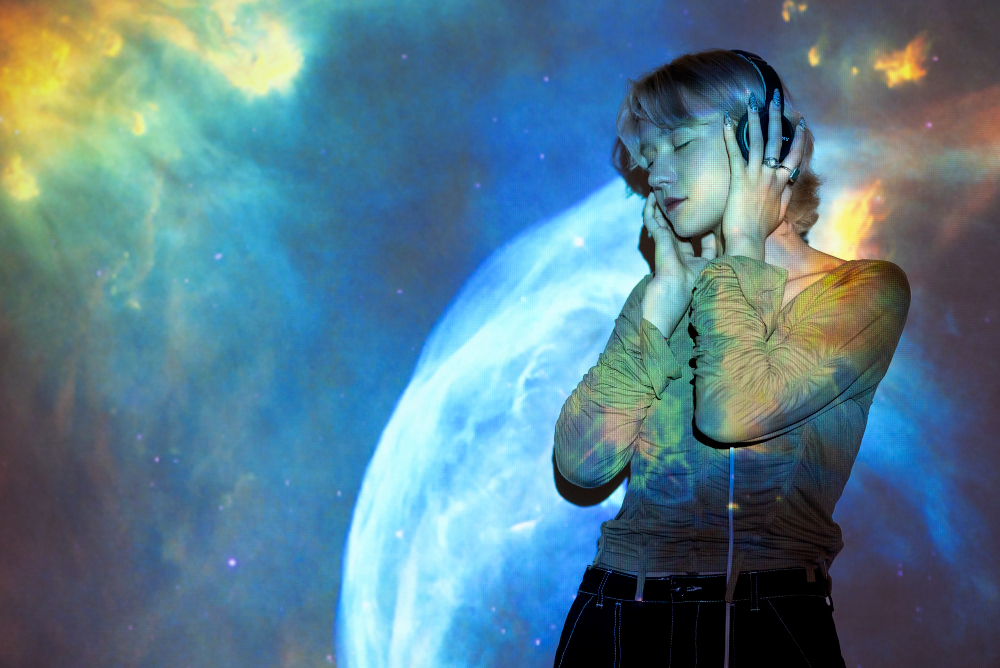The Future of EMDR: Visuals, Sound, and the Promise of VR in Therapy
The integration of advanced technologies like AR/VR in Eye Movement Desensitization and Reprocessing (EMDR) therapy is opening new doors in the...

Attention-deficit/hyperactivity disorder (ADHD) is a common neurodevelopmental disorder characterized by inattention, hyperactivity, and impulsivity (American Psychiatric Association, 2013). While stimulant medications are often used to treat ADHD, there is growing interest in complementary and alternative therapies such as binaural beats. Binaural beats involve listening to two slightly different frequencies in each ear, which creates the perception of a third tone. Emerging research suggests binaural beats may have therapeutic potential for improving ADHD symptoms.
Binaural beats appear to influence brain activity by synchronizing the two hemispheres of the brain (Huang & Charyton, 2008). This synchronization can facilitate relaxation, focus, concentration, and improved sleep (Atwater, 2009). As many ADHD symptoms stem from inadequate synchronization between the two brain hemispheres, binaural beats may help entrain the electrical activity of the brain to optimal levels (Oster, 1973).
Several studies have examined the effects of binaural beats on ADHD symptoms, with promising results:
- A randomized controlled trial found binaural beats led to significant improvements in inattention and impulsiveness compared to placebo (Kennel et al., 2010).
- In a study of children with ADHD, theta/beta binaural beats were associated with improved attention and executive functioning (Rossiter & La Vaque, 1995).
- Listening to beta-frequency binaural beats pre-task was found to improve attention and short-term memory in adults with ADHD (McConnell et al., 2014).
While more research is needed, these preliminary findings suggest binaural beats may be helpful as an adjunctive therapy for improving focus, attention, and impulse control in ADHD.
VRenity is taking binaural beats to the next level by incorporating them into immersive experiences. Clean AI integrates binaural beats with 8D sound and virtual reality to create 360° environments optimized for relaxation, focus, sleep, and more.
8D audio is an advanced sound technology that produces a multi-dimensional, spatially immersive listening experience through headphones. By combining binaural beats, 8D sound, and VR, VRenity can fully envelop users in an optimized dreamscape. The immersive nature of these experiences may enhance the effects of binaural beats on brain synchronization.
VRenity aims to leverage cutting-edge audio, VR, and AI to create targeted solutions for mental health, wellness, and cognitive performance. Our mission is to use technology for good to improve people's lives. Early research on immersive binaural beats looks promising, and Clean AI's innovative approach represents an exciting frontier in integrative therapies for ADHD and more.
Preliminary research suggests binaural beats may have potential as a non-pharmacological adjunctive therapy for ADHD, with possible benefits for improving inattention, impulse control, and working memory. Emerging immersive audio technologies like those being developed by VRenity could take binaural beats to the next level for ADHD and other brain-based conditions. More research is still needed, but binaural beats ultimately provide an accessible, drug-free option for ADHD patients interested in complementary integrative approaches.
Sources
American Psychiatric Association. (2013). Diagnostic and statistical manual of mental disorders (5th ed.).
Atwater, F. H. (2009). Binaural beats and the regulation of arousal levels. TMI Journal, 1(2), 68-75.
Huang, T. L., & Charyton, C. (2008). A comprehensive review of the psychological effects of brainwave entrainment. Alternative Therapies in Health and Medicine, 14(5), 38–50.
Kennel, S., Taylor, A. G., Lyon, D., & Bourguignon, C. (2010). Pilot feasibility study of binaural auditory beats for reducing symptoms of inattention in children and adolescents with attention-deficit/hyperactivity disorder. Journal of Pediatric Nursing, 25(1), 3-11.
McConnell, K. M., Froeliger, B., Garland, E. L., Ives, J. C., & Sforzo, G. A. (2014). Auditory driving of the autonomic nervous system: Listening to theta-frequency binaural beats post-exercise increases parasympathetic activation and sympathetic withdrawal. Frontiers in Psychology, 5, 1248.
Oster, G. (1973). Auditory beats in the brain. Scientific American, 229(4), 94-102.
Rossiter, T. R., & La Vaque, T. J. (1995). A comparison of EEG biofeedback and psychostimulants in treating attention deficit/hyperactivity disorders. Journal of Neurotherapy, 1(1), 48-59.
Image Source: Image by Freepik

The integration of advanced technologies like AR/VR in Eye Movement Desensitization and Reprocessing (EMDR) therapy is opening new doors in the...

Introduction Aphantasia is a newly recognized condition characterized by an inability to voluntarily conjure mental images (Zeman, Dewar, & Della...

In the quest to understand the human brain, one avenue has shown promising results: the influence of spatial sound. This multidimensional audio...